Broken News
(All the News That's Fit to Reprint)
Antiquities Returned to Costa Rica
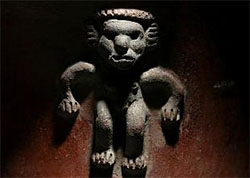 |
| Looks Like One of GG`s Cousins |
The Costa Rica National Museum was recently very happy to receive some 1,300 artifact pieces from the collection of the Brooklyn Museum in New York City. These heritage pieces of Costa Rica include an unfinished tombstone, a large ceramic vase painted with beeswax, human representations and ancient tools to process corn. The tombstone is believed to have been part of a tomb of an important person from a now-extinct civilization.
Some of the pieces date back more than 2,000 years. The pieces were "collected" (some would say looted) by Señor Minor Keith in the late 1800`s when the railroad was constructed from the Central Valley to Limón to allow shipments of coffee from the Caribbean coast, principally to the U.S.. That project, directed by Keith, also indirectly gave birth to the Costa Rica banana industry. To read more about Keith and that period of Costa Rican history go HERE.
This is the second time the Brooklyn Museum has returned antiquities to Costa Rica. And they didn`t even need to include the Mystery Spheres of Costa Rica which were discovered here in recent years.
Way to go Brooklyn Museum, our heritage property returned!
Magazine Says Costa Rica is Healthy Destination
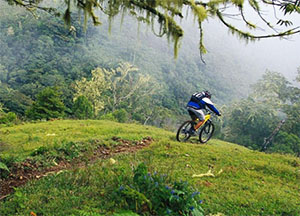 |
| Mountain Biking in Costa Rica |
Men`s Health Magazine, a Hearst publication, recently issued its first edition of the Healthy Places 2021 awards in its Spanish version.
In it, Costa Rica was recognized as the “best international healthy destination”. In that edition other places listed were Tenerife, Marbella Club (Málaga, Spain), Gran Canaria Spa (Gran Canary Island). Tri BIke & Run, Gymage Resort (Madrid), and Buchinger Wilhelmi (Germany).
Said the Magazine: "It brings together more than 6.5% of the world’s biodiversity and the advance in sustainability policy and social progress makes this destination one of the most desirable in the world. With tropical forests and coasts in the Caribbean and Pacific, it is perfect for practicing all kinds of sports. In addition, new direct flights to its capital, San José, make it even more appealing.
It deserves the award because … Its has perfect settings for sports." Nicely put folks, thanks.
 |
| (Show Off!) |
I was taken aback by the article when I remembered that I was around and lived only a couple of miles from Rodale Press in Emmaus, PA. Rodale was both a customer for my computer supplies business and a supplier where I kept buying Day-Timers for me and my associates. Some will remember the Day-Timer, a notebook sized calendar and note system that was popular then; before we had access to Outlook and other computer systems to manage our schedules. Day-Timer was an original Rodale publication.
During the `80s Rodale diversified by starting Men`s Health and launching it in the mid-´80s. It`s success was noticed by Hearst Corporation who acquired all of Rodale`s global health and wellness brands in January of 2018. Men`s Health is now the world's largest men's magazine brand, offering ten issues per month on its flagship edition. It is also available in 21 languages with 35 editions in 59 countries.
Day-Timers were Another good-idea success story.
Costa Rica Growing
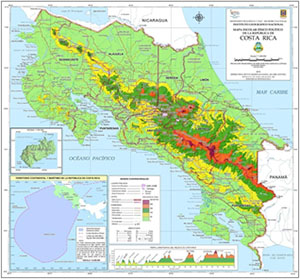
No, not in population as that will take care of itself, but in land area. And it did this peacefully with no military acquisition of land from other countries. Basically the result is from having better technology to measure land area. The latest measurement from this new technology, the type of which was not mentioned in the article I read (but it`s likely satellite based) says Costa Rica is 80 km2 (in a total of 51,000 km2) more than measured by the older means.
Oh pshaw, you say, that`s nothing! Maybe in other countries like the U.S.A. (9,834,000 km2) that`s not much but eighty square kilometers converts to just under 20,000 acres; so all you people can come on down and take your pick of the new lots! (just kidding).
Kids Back in School
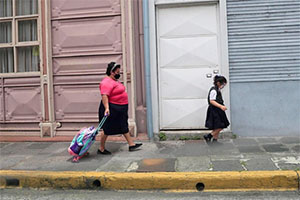 |
| Time for Missy to Carry Her Own Bags Mom |
After a month and a half hiatus for school kids due to a new spike in Covid cases nationally, school children started up again in Costa Rica on July 12. The number reached 1.2 million on July 12.
The distance between students in the class room has been reduced to 1 from 1.8 meters but the earlier standard has been maintained for teachers in non-classroom settings such as lunch rooms and training conferences.
About 97% of education workers have received the first shot of the vaccine and about 11% have received the second shot; the conversion rate to fully vaccinated should occur in the next month or two.
C`mon kiddies, lets study!
WW-II Commemorative Anniversary
World War Two touched Costa Rica in a significant way when a Nazi submarine snuck into Limón harbor on July 2, 1942 and launched a torpedo attack against a navy supply boat killing 23 people including 13 Costa Ricans and one U.S. national.
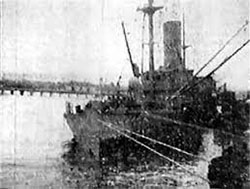 Those that died were: Antonio Mora Chavez (39 years old), Miguel Méndez Vargas (67), Samuel Jones De Cushine (32), Leslie Herman Clarke Wright (41), Gerard Brown McDaniel (44), William Lapsley Martin (50), Ernest Sinclair Wade (57 ), Alfonso Notice Williams (31), Thomas Evans (30), Alfredo Colville Lunan (59), Clifford Powell Smith (45), Gonzalo Quesada Quesada (54), Albert Hay Carr (24), Edwin Diamond Lafuente (56), Edwin Charles Lewis Pinckney (24), Carlos Pearson Sawyers (27), David Banton Mullins (49), Félix Sebe Lewis (34), Augusto Holmes Mathew (49), Stanford Morris Sewell (30), Jacob Robinson Greenage (61), Egbert Henry Gordon (24), Percibal Heslop Saunders (47) and Clem Burns (the U.S. national - 47). All of these were working as stevedores on the ship known as San Pablo (old photo left).
Those that died were: Antonio Mora Chavez (39 years old), Miguel Méndez Vargas (67), Samuel Jones De Cushine (32), Leslie Herman Clarke Wright (41), Gerard Brown McDaniel (44), William Lapsley Martin (50), Ernest Sinclair Wade (57 ), Alfonso Notice Williams (31), Thomas Evans (30), Alfredo Colville Lunan (59), Clifford Powell Smith (45), Gonzalo Quesada Quesada (54), Albert Hay Carr (24), Edwin Diamond Lafuente (56), Edwin Charles Lewis Pinckney (24), Carlos Pearson Sawyers (27), David Banton Mullins (49), Félix Sebe Lewis (34), Augusto Holmes Mathew (49), Stanford Morris Sewell (30), Jacob Robinson Greenage (61), Egbert Henry Gordon (24), Percibal Heslop Saunders (47) and Clem Burns (the U.S. national - 47). All of these were working as stevedores on the ship known as San Pablo (old photo left).
Surviving relatives of those that lost their lives have commemorated the event annually in Limón on the anniversary date and did so again this year. To read more about the fate of the San Pablo and Costa Rica`s effort during World War II, go HERE.
Tica Cyclist #1 in Americas, #2 in the World
Twenty year old Abigail Recio, a Tica Cyclist, is now ranked number two in the world in the Under-23 category in competitive cycling. That also gives her position #1 in the Americas. This from a young lady who didn`t know how to ride a bicycle until she was taught by her dad when she was 15.
 |
| She`s Almost a Blurrr... |
Abigail went to Baja, California in Mexico when she was 15 for training twice a day "trying to beat the thousandth clock" where temperatures are routinely 40 degrees (Celsius; about 104F). The training paid off and she credits that training to the successes she`s received so far. she`s also been selected to go to Medellín, Columbia, which she describes as the "the cradle where the best track cyclists are born" to train for her participation in the Junior Pan American Games, which will be in Cali, Colombia, from November 25 to December 5, 2021.
“I am going to prepare as well as possible, I want to finish the Junior Pan American Games in Cali improving my personal records, giving everything to get to an important position taking advantage of now that I will be training in Medellín,”
It not only takes physical skills to be a champion but it also takes heart and Abigail has both.
Go Abby!
Ad Astra Rocket Company Gets Major New Propulsion Contract
Ad Astra Rocket Company, headquartered in Guanacaste, owned and managed by Costa Rica`s former astronaut Franklin Chang-Diez, has been awarded a several million dollar contract to further develop a major new rocket propulsion system.
NASA is now operating in a mode they call Next Space Technologies for Exploration Partnerships (NextSTEP - see, it`s not just Ticos that love Acronyms) to advance new space concepts in public/private partnerships. Twelve new contracts were awarded in disciplines including propulsion (3, including Ad Astra), life support habitation systems (7) and boosting cubesats or small satellites as an add-on the other projects (2).
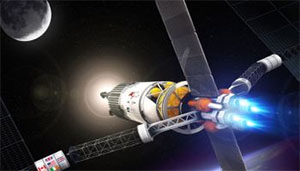 To go further into space beyond the moon (Mars for example) it will be necessary to devise a much improved rocket engine performance over standard propulsion systems. Ad Astra and Chang-Diez have been working on such a system. Ad Astra recently demonstrated a very high performance for its new VASIMR VX-200SS propulsion system, an "electric-electric" engine that operated at 82.5 kw for 28 hours. Evidently a 50 kw performance is considered "high powered" and there had been nothing available in the NASA shop to date prior to VASIMR that generated over 5 kw.
To go further into space beyond the moon (Mars for example) it will be necessary to devise a much improved rocket engine performance over standard propulsion systems. Ad Astra and Chang-Diez have been working on such a system. Ad Astra recently demonstrated a very high performance for its new VASIMR VX-200SS propulsion system, an "electric-electric" engine that operated at 82.5 kw for 28 hours. Evidently a 50 kw performance is considered "high powered" and there had been nothing available in the NASA shop to date prior to VASIMR that generated over 5 kw.
Look to the stars my friends, it`s inevitable.
Summer Olympics Team Opens In Tokyo
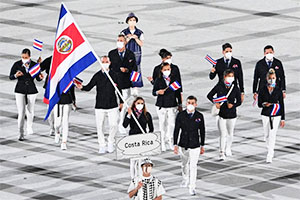 Last month the Chronicles stated that Costa Rica had qualified a record nine athletes for the 2021 Summer Olympic Games, this year being held in Japan. This despite the fact that qualification rules had tightened significantly now requiring a point system based on performance in pre-qualifiers identified by the Olympic Committee.
Last month the Chronicles stated that Costa Rica had qualified a record nine athletes for the 2021 Summer Olympic Games, this year being held in Japan. This despite the fact that qualification rules had tightened significantly now requiring a point system based on performance in pre-qualifiers identified by the Olympic Committee.
So the games opened on schedule on July 23 in Tokyo and there was the team of nine Tico qualifiers marching in the entry parade waving there own red, white and blue (photo).
Congratulations amigos!
¡Pura Vida!
TOP
Economic Drumbeat
(Costa Rica Business Happenings)
Raw Material Prices Increasing
The Central Bank of Costa Rica has come up with a new index that measures the cost of an aggregate of raw materials including grains (wheat, corn, soybeans and rice), metals (iron, steel, aluminum, zinc and copper) and crude oil (unrefined). Unfortunately the first time they calculated the index it showed a price level for these commodities for May 2021 that is the highest value seen in the last eight years.
These products represent 15% of Costa Rica’s total imports and 35% of raw material imports (average from 2013 to 2020), the monetary authority explained in a statement. The index uses a base of 100 in 2017 and showed an appropriate decline during the peak Covid months and lower economy of March thru September 2020 followed by significant and accelerating indices in the early months of this year.
New Law to Encourage Economic Reactivation
In a short period of time, a new bill to encourage foreign resident investors in Costa Rica passed the Assemblea two-reading requirement by ratios of 35 to 10 and on June 10 the bill was signed into law by President Alvarado. It is intended to attract foreign residents who invest in local assets (homes, businesses, financial vehicles) to a certain minimum level who will, in exchange, receive a 10-year residency (called an "Inversionista") in Costa Rica. Here are the new rules that apply:
- The minimum investment required drops from $200,000 to $150,000.
- Exemption from import taxes of up to two land, air and sea vehicles, for personal or use. This includes Value Added Tax. For any vehicle lost due to theft, destruction by fire, flood, collision or accident during the period of validity of the incentives, the resident may import another vehicle totally free of taxes.
- Reduction by 20% of the tax on the transfer of real estate during the validity of the residency period.
- Upon demonstration to the Minister of Finance that the imports are used in their business with a criteria of proportionality and reasonableness, those imports will also be free of import taxes.
With this program, the government hopes to attract a significant amount of new capital and spur recovery from the Covid episode.
Vamos a ver (we`ll see).
New Tax on Upper Class Homes
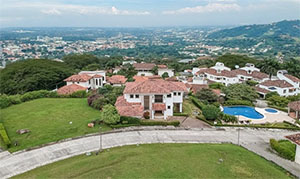 |
| Taxes Probably Going Up |
While the President was crafting his program for economic reactivation, his government also signed and got Assemblea approval of an agreement with the International Monetary Fund where that financial organization would provide a loan of $1.8 billion to keep the government going during the Covid restart. That agreement included an IMF provision requiring increase property taxes on high/end housing units that include both single family homes and apartment complexes. This is on property valued at 150 million colones ($245,000) or more.
The new tax scale is progressive and for a house worth ₡300,000,000 ($490,000) the annual property tax would be ₡1.5 million ($2,500). The lower end actually starts at 0.25% of the property value or ₡133 million ($545) and rises in six steps to 0.55% so that for a property valued at ₡2.0 billion ($3.3 million) the tax would equal a little over $18,000 annually.
It would seem to me that the people/owners of such properties are likely to be the same ones the government is trying to attract with their Economic Reactivation Plan and that the two programs seem to work against each other. We shall see, won`t we?
Fuel Prices Going Up Again
In the Costa Rican system for managing fuel prices, the request for a change in prices goes from Recope (Refinadora Costarricense de Petróleo), the company that used to but no longer refines oil, still retains the responsibility for setting fuel prices. The price they propose, however, must be approved by Aresep (Regulatory Authority of Public Services) which, in the case of fuel prices seems to be a slam dunk for Recope.
Recope just made its eighth consecutive request this year for an increase, the first seven having received rubber stamp approval. By law the request must be approved or denied within 15 days (July 25) by Aresep but no one expects it to be denied. The new prices for Super will be ₡749/l (749 colones per liter) or $4.58 per gallon at the current exchange rate. Regular gas will go to ₡725/l ($4.43/gal). Both of those run about a 50% premium over U.S. Prices (Florida).
Walmart Money Centers Open
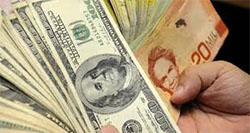 One of the things that often perplexes expats when they take up residency here is the seeming complexity in handling money (and I don`t mean conversion rate). One of the best pieces of advice I got when I was new here was to leave my US account open but have another here for local transactions. I ended up with a U.S. account in a major bank stateside with a debit/credit card and a checking account at a national bank here (I very rarely write a check from either source, preferring to use the bank`s Billpay service in both places).
One of the things that often perplexes expats when they take up residency here is the seeming complexity in handling money (and I don`t mean conversion rate). One of the best pieces of advice I got when I was new here was to leave my US account open but have another here for local transactions. I ended up with a U.S. account in a major bank stateside with a debit/credit card and a checking account at a national bank here (I very rarely write a check from either source, preferring to use the bank`s Billpay service in both places).
Sometimes it is also more convenient to have another pseudo-bank system (such as Paypal) to receive and dispense smaller amounts. Over time the result has been that I have my SS check deposited directly to the local national back and a pension check deposited to my U.S. account. It turns out that that division of income proved a good balance, with the SS check paying for routine living expenses and the U.S. account I keep in reserve for larger or unexpected payments. Keeping the transaction in banks also minimized being confronted with bad exchange rates.
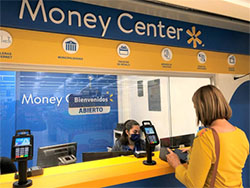 |
| Walmart Money Center |
But let`s get to the topic. Walmart has expanded their service centers to include Money Center Kiosks to provide another way of sending or receiving remittances from the U.S. The company initially will have these center at 14 Walmart stores, 38 MasxMenos, 5 Maxi Palí, and 4 Palí located across the seven provinces. The company could expand the number of kiosks to more rural areas in the second half of the year (Quepos already has a Maxi Pali).
GG is not necessarily recommending this system as I don`t know the intricacies or fees involved but the name on the door makes it worth investigating as a possible option for expats.
¡Pura Vida!
TOP
Latin America Updates
(Major Events In Neighboring Countries)
Cuba

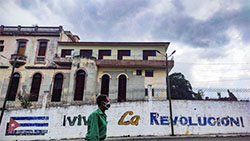 |
| Revolution Signs Are Wearing Old |
For the last few months, and after the change of power to the new First Secretary of the Communist Party, Miguel Díaz-Canel who is, in effect, Dictator, there has been some rumblings of increased desire on the part of a number of artists for greater freedom of expression.
Suuure, say the communist leaders but “We are not going to give away the Revolution or its spaces" (not sure what they mean by spaces). This latest comment echoed the command of their founder Fidel Castro who put it this way: “Within the Revolution, everything, outside the Revolution, nothing,” That sounds like it leaves a lot of room for no change. In the meantime, long lines still form for food and free thought that the revolutionists don`t agree continues to be muzzled.
To review the history of Fidel Castro coming to power until the present you might want to read this article by Q-Costa Rica: The end of the Castro era in Cuba | Q COSTA RICA
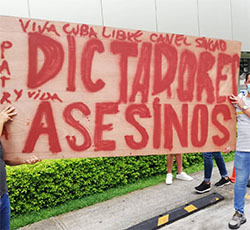 |
| Cubans March In San José |
The end of the Castro name appearing in the top leaders, or the waning of the pandemic, or both, recently produced an outpouring of demonstrations for freedom in Havana. To see what`s going on there, go here: https://www.youtube.com/watch?v=6k-u4NKXarc.
On the 14th of July, Cubans living in Costa Rica amassed in front of TV Channel 7 in San José only a few hundred meters from the Cuban Embassy shouting “Murderous dictators”, “homeland and life”, “Canel and henchmen will pay.” “Down with the Castro-Canel dictatorship! Viva Cuba!”, “Stop killing our people!”
The real question is how brutal the communists will be trying to suppress this movement.
El Salvador
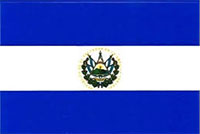
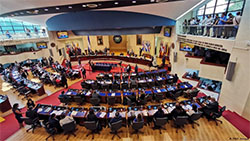 |
| El Salvador Congress |
President Naib Bukele last month introduced a bill into the El Salvadoran Congress to modify the criminal code to include items of "corruption" not previously included. These items included; torture, terrorism, kidnapping, genocide, forced disappearance and sexual crimes against girls or boys. Really?? What were they before, social activities? The bill also seeks the code to be labeled of “public order” meaning they can be reopened as cases even if previously concluded.
Said Bukele on his Twitter account: “If you are or were corrupt, you will no longer sleep peacefully. If you are an honest Salvadoran, you will be happy for this new stage in our country,” We`ll see.
Guatemala
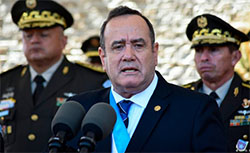 |
| President Alejandro Giammattei |
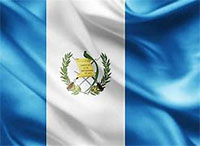 In Guatemala last month the emphasis was on President Alejandro Giammattei`s denial of receiving of old bribes in the form of money from Russian intermediaries. His denial came four days after the dismissal of the anti-corruption prosecutor Juan Francisco Sandoval who said that he had information of about reported deliveries of money to the government by Russian citizens last April, without elaborating on the matter.
In Guatemala last month the emphasis was on President Alejandro Giammattei`s denial of receiving of old bribes in the form of money from Russian intermediaries. His denial came four days after the dismissal of the anti-corruption prosecutor Juan Francisco Sandoval who said that he had information of about reported deliveries of money to the government by Russian citizens last April, without elaborating on the matter.
More to be offered and seen on this one I suspect.
Haiti
 Haitian President Jovenel Moise was assassinated in the middle of the night of Wednesday, July 7 in his home. About 30 people have been arrested which include over 20 Colombian mercenaries who did the shooting and several political rivals to Moise. Among the so-called rivals was Dr. Christian Emmanuel Sanon, 63, "a Haitian national doctor who lives in Florida. He arrived in the country via private jet last month with a group of Colombian nationals with the initial goal of `arresting the president` according to Haitian national police director Leon Charles.
Haitian President Jovenel Moise was assassinated in the middle of the night of Wednesday, July 7 in his home. About 30 people have been arrested which include over 20 Colombian mercenaries who did the shooting and several political rivals to Moise. Among the so-called rivals was Dr. Christian Emmanuel Sanon, 63, "a Haitian national doctor who lives in Florida. He arrived in the country via private jet last month with a group of Colombian nationals with the initial goal of `arresting the president` according to Haitian national police director Leon Charles.
Moise`s wife, Martine Moise, was wounded in the attack and transported to a Haitian hospital but later evacuated to Miami, Florida, for more treatment. She is expected to recover.
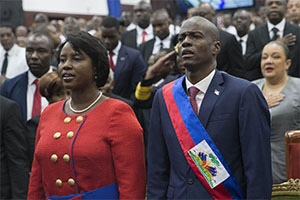 |
| Assassinated President and Wife |
The future of the Haitian government has been thrown into chaos as there is no pre-designated heir, such as a Vice-President. Instead the current prime minister and his team, backed by investigators from the U.S. FBI and National Security Agencies declared a "State of Siege"; various political factions within the government began vying for control.
Problems had begun to devolve months before the assassination when Moise declared himself authorized to be president for another year in power because his swearing-in ceremony had previously been delayed. Public protest marches began calling Moise a dictator The event has resurrected the centuries-old specter of political bloodshed in the poverty-stricken Caribbean nation.
Jovenel Moise was not the first victim of political violence in Haiti since winning independence from France in 1804.
Be sure to read the piece below on the History of Haiti and Hispaniola, the early designation of the island now containing both Haiti and the Dominican Republic.
Nicaragua
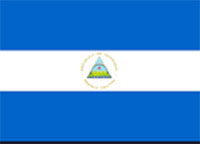 Last month the Chronicles reported that the president-for-life (read virtual dictator) Daniel Ortega had begun rounding up political rivals in advance of the November national elections; reports this month were not improving things.
Last month the Chronicles reported that the president-for-life (read virtual dictator) Daniel Ortega had begun rounding up political rivals in advance of the November national elections; reports this month were not improving things.
On July 19, because of a broadcast by a well known political analyst named José Antonio Peraza, and hosted by Ortega`s principle opponent, Carlos Fernando Chamorro, the journalist Peraza warned that under the Ortega regime “there are no conditions for a free and competitive election." One day after the interview, the political scientist was arrested on the grounds that he had committed “acts that undermine independence, sovereignty and self-determination”.
The broadcast, by the way, had to be done by YouTube exclusively because Chamorro`s office had been attacked earlier and his equipment confiscated. According to local sources this now puts the total of Ortega rivals that have been detained or disrupted at 29 as of about the same date in July.
Peru
Part of modern Peruvian history unfortunately includes a period in 1996-2000 of forced sterilizations that are estimated at more than 300,000 women and 22,000 men were subjected to the procedure. In most cases, these occurred without preparation and without postoperative care. This State violence was named the National Program for Reproductive Health and Family Planning, and was perpetrated by the government of Alberto Fujimori (1990-2000) as a way of fighting poverty.
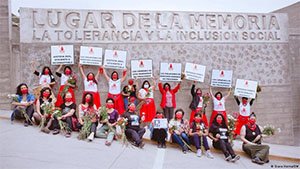 |
| DEMUS Women Demonstrating |
Inevitably a national movement (now called DEMUS or Derechos de la Mujer (Rights of the Women) was formed and in early February of this year the government announced that it “recognizes the right to compensation for victims” But who is directly responsible for the actions and what compensation will actually be available has not yet been defined. For Jujimoro`s part he denies any responsibility saying the law was already in effect when he took office. Much, much more to be heard on this one.
GG must say that, after reading the turmoils of the six countries above, including three Central American countries, I have to be grateful that my citizenship is limited to the greatest democratic experiment in history (the U.S.A.) and the most stable country in Latin America that I can think of (Costa Rica).
¡Solo Bueno!
TOP
Understanding Tico Horn Signals
(It`s Not As Bad As You Think)
About ten years ago I met an expat by the name of Allen Dickinson who had moved here a couple of years before me. Like me he fancied himself a writer, so naturally we came together at a writers group meeting in San José.
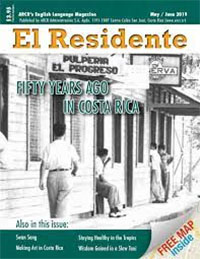 For background information Allen moved to Costa Rica in 2006. He had married a Costa Rican, which is one way to get rapid residency and citizenship (but don`t fake it because that breaks the law and can result in jail time). To prove he was not faking, he and his wife raised four children, and he is now also the grandfather of four. He holds a Masters degree in large group psychology, which helps him try to understand and write about the Latin culture, but he refrains from blowing his own horn. He lives with his family in Cuidad Colon (translate that to Columbus City), a town in the Central Valley not far from San José.
For background information Allen moved to Costa Rica in 2006. He had married a Costa Rican, which is one way to get rapid residency and citizenship (but don`t fake it because that breaks the law and can result in jail time). To prove he was not faking, he and his wife raised four children, and he is now also the grandfather of four. He holds a Masters degree in large group psychology, which helps him try to understand and write about the Latin culture, but he refrains from blowing his own horn. He lives with his family in Cuidad Colon (translate that to Columbus City), a town in the Central Valley not far from San José.
 |
In 2015 Allen began editing the ARCR magazine El Residente. He has helped turn it into a 1st-class magazine that offers the newcomer or potential resident basic and helpful information about living here. The ARCR acronym translates officially to the Association of Residents of Costa Rica and is an organization that, for over 30 years, has assisted those living or retiring in Costa Rica and those considering moving here. So Allen has ample experience in studying the cultural differences between gringos or Estadosunidenses ("USers") and Ticos.
Recently Allen wrote an essay in his El Residente column on cultural differences, particularly with regard to car manners and honking that I found interesting and humorous so I asked for permission to reprint it. Allen readily agreed and what follows is his essay:
by Allen Dickenson
The Unwritten Language of Horn Blowing. Yeah, this is a rerun. But every couple of years (when I can’t think of anything new and interesting to write about) I like to give those who haven’t been here long, and may be struggling to learn Spanish and understand the culture, a glimpse into some of the unwritten communications that Tico’s use.
Every nationality has different gestures and signals they use to “speak” with each other, and Costa Rica is no different; there’s a whole language our hosts use to communicate with each other when driving. Hopefully this will take some of the mystery out of what you have heard, but have not been able to interpret. But then again – well – read on. I have previously written in this column about how to interpret the meaning behind the headlight flashing and turn-signals Tico car and bus drivers use, and in this column I want to say something about the etiquette of horn blowing according to Costa Rican vehicle operators’ standards.
 Basically, there are three types of horn blowing that will be encountered.
Basically, there are three types of horn blowing that will be encountered.
But first a side note for those new to driving in Costa Rica; the occurrence of horn blowing has drastically reduced over the past decade. So, for those who find the current rate of honking excessive, be grateful you weren’t here ten years ago! The reduction has made the horn signals Ticos use much easier to decipher.
Here’s a summary of the three basic types: 1) A single, brief (half-second) honk. 2) A double honk comprised of two single beeps, also usually of short duration. 3) A prolonged blast of two (or more) seconds in duration. What do they mean? Here’s a key:
Type 1 - The single, short beep, is often heard from behind while at a stop light. It’s generally a polite signal to the car(s) ahead that the light changed nanoseconds ago and that some less attentive driver(s) between the person honking and the light should, “Wake up and get moving. Now!” OR, it could be a polite, “Thank you.” for something. More about that later in Type 2.
Type 2 - The short double beep can be confusing because it’s often used to communicate different messages in different situations. For instance, it could be a simple “hello” being passed to a friend or acquaintance walking or driving by. Or, it could be someone asking for permission to enter or cross a stopped or slow moving traffic stream (often answered by an equally short double toot granting the request). Or, it could be a, “Thank you!” from a driver who was allowed to make the requested entry into the traffic stream (a friendly wave of the hand is an acceptable substitute for the “thank you” honks). Or, in the case of faster moving traffic, it can be a warning, “I am coming through and look out because I’m not slowing down for you! Or, in other situations, it can mean that the driver making the signal is saying, “I have a newer/more expensive vehicle than you, and therefore I have priority over your older/ cheaper/low-class vehicle, so you should get out of my way!”
 Type 2-A - In cases where the double klaxon sound is coming from a taxi, it could be that the driver is signaling a pedestrian saying, “Estoy libre! (I’m free!) Do you need a ride?” Or, if it is a pretty female pedestrian, it could be the driver (taxi or otherwise) is communicating that they find the woman attractive and are offering her a possible ride, a relationship, and to father her children. Or, it may mean, “Hey, I know you. Do you need a ride? If so, I’ll stop right here in traffic so you can get in.” This can result in a Type 3 honk (discussed later) from other drivers.
Type 2-A - In cases where the double klaxon sound is coming from a taxi, it could be that the driver is signaling a pedestrian saying, “Estoy libre! (I’m free!) Do you need a ride?” Or, if it is a pretty female pedestrian, it could be the driver (taxi or otherwise) is communicating that they find the woman attractive and are offering her a possible ride, a relationship, and to father her children. Or, it may mean, “Hey, I know you. Do you need a ride? If so, I’ll stop right here in traffic so you can get in.” This can result in a Type 3 honk (discussed later) from other drivers.
Type 2-B - Motorcycle riders also use their horns to communicate with other drivers. Most often it is to simply say, “I am riding in your blind spot and at some unannounced time I am going to come around you (to the right or left side) so don’t run over me.” See, that’s not so confusing, is it? OK – a little – but you’ll adapt. Note, the duration of both kinds of signals described as Types 1, 2, 2-A, and 2-B can vary in length. One should be aware that if one of these honks is repeated and is a bit longer, it is showing aggravation. This sometimes happens in a stalled traffic situation where, by honking, someone is declaring that they think that all the vehicles preceding them should get out of their way, and thus disappear the traffic blockage so they can go about their business. This usually does not work.
Type 3 - The meaning of Type 3 is much easier to determine. The message being conveyed by the long (two-second or longer) blast is: “YOU-ARE-AN-IDIOT!-for-trying-that-stupid/dangerous/selfish/inconsiderate-maneuver-you-just-made-and-next-time-I’m-not-going-to-stop-and-we’ll-just-have-a-collision-and-I-will-ruin-your-life-and-the-lives-of-your-family- including-your-yet-to-be-born-children-and-you-will-pay-me-for-the-damage! Have a nice day!” Obvious, no?
 One might wonder, as I have, how Ticos can generate virtually instantaneous horn blowing actions (see “nanoseconds” in Type 1, above). The secret is that many drive with both hands on the wheel and with a finger or thumb perpetually poised over the horn button, ready to signal to others around them at a moment’s notice.
One might wonder, as I have, how Ticos can generate virtually instantaneous horn blowing actions (see “nanoseconds” in Type 1, above). The secret is that many drive with both hands on the wheel and with a finger or thumb perpetually poised over the horn button, ready to signal to others around them at a moment’s notice.
The attitude is that you never know when someone else needs notification of their stupidity/my importance. From this you can understand why one of the requirements for a vehicle to pass the annual Riteve inspection is to have a working horn; not having one is cause for failing the inspection. It doesn’t matter if the original horn button on the steering wheel is no longer functional, a substitute button placed somewhere approximately within the driver’s reach is fine – it just has to activate the horn.
As I said earlier, the frequency of horn blowing in traffic has reduced significantly over the past few years. No longer, well, less frequently, do you have to decipher if the honker is saying something like, “I-was-not-ready-for-the-turn-across-lanes-you-just-made-and-it-caused-me-to-mis-select-the-radio-station-I-was-trying-to-tune-in-so-don’t-do-that-again” OR, “It’s only a red light – go ahead, I would.”
Finally, the key to reducing the stress from excessive (by expat standards) Type 1 and Type 2 horn blowing is to recognize that many of those bleats and blats are probably not directed at you, and/or that it is simply someone expressing their displeasure without expecting anything to change. In most cases, the prudent expat driver may ignore the signals and go on driving as they were before.
So, wasn’t that easy? Now you can drive with the confidence of knowing you know the code. (Oh, and by-the-way, these definitions are only generalizations and may or may not apply – ever.)
Allen Dickenson May 2021
Thanks amigo Allen; you nailed it. I`ve been wanting to classify those bleats, blats and honks for some time and you did; Type 1, 2, 2a, 2b and 3. Works for me kid, although I might add a Type 4; the unending horn blasts that occur when groups of thirty or more Ticos ride through the neighborhoods together in several cars to celebrate a) the winning of a game by the Sele (National Futbol Team) or b) to support a candidate for municipalidad, assemblea or president...and for almost any other reason that suits them at the moment.
Thanks again Allen for letting my readers see this article and...drive safely amigo.
¡Solo Bueno!
TOP
Rumble and Weather Talk
(Shaky Happenings & Weather Observations About the Pacific Rim)
Rumbling
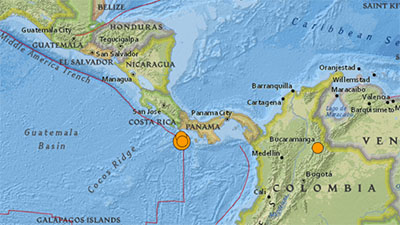 |
| The Three Tremors in Punta Burica, Panama (center) |
In the tremor department it was a slow month locally until 3:15 PM, 21 July when a 6.7R (USGS numbers) shaker kept my chair moving to and fro for an exceptionally long time, like 30-45 seconds. The USGS pinpointed the epicenter at 7.590°N 82.881°W or near Punta Burica, Panama. Punta Burica is at the tip of a peninsula that sticks out into the Pacific Ocean very close to the Costa Rican border with Panama. My guess is that it`s no more than 120 miles south of Quepos as the rumble travels.
Just to let us know who`s the boss once more, mother nature decided to add a second and third tremor right on top of the first one. The second shaker occurred about 20 minutes after the first and registered 4.7R while the third one happened about a half hour after that and registered a 4.9R. All three of these were pinpointed at about 10 km down.
Weather
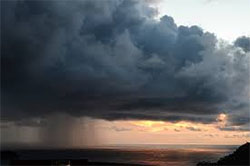 What can you say about the rainy season in Costa Rica?. That it rains a lot amigos, that`s what you can say. The heavy ones are described by the meteorologists as the "convergence of the tropical zones" in which rain squalls and storms come from the Caribbean Sea and move rather much along the equator from east to west. In July we had our share of these storms and, at my last count (July 26), we had experienced our 18th "tropical wave" of the season, at least one of which caused serious flooding in Quepos.
What can you say about the rainy season in Costa Rica?. That it rains a lot amigos, that`s what you can say. The heavy ones are described by the meteorologists as the "convergence of the tropical zones" in which rain squalls and storms come from the Caribbean Sea and move rather much along the equator from east to west. In July we had our share of these storms and, at my last count (July 26), we had experienced our 18th "tropical wave" of the season, at least one of which caused serious flooding in Quepos.
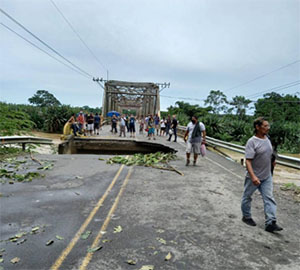 And the northern part of the country hasn`t fared much better with flooding and landslides either. This was true particularly in the northeast in the provinces of Limon and Cartago where the bridge over the river Estrella (photo) had the entrance ramp destroyed (someone should tell those people it`s not safe to congregate on the bridge side of that gap). CNE (Center for National Emergencies) announced that by July 26 the number of activated emergency shelters had increased from 29 to 52 and approximately 3,000 people were being sheltered after having left their homes in flooded areas.
And the northern part of the country hasn`t fared much better with flooding and landslides either. This was true particularly in the northeast in the provinces of Limon and Cartago where the bridge over the river Estrella (photo) had the entrance ramp destroyed (someone should tell those people it`s not safe to congregate on the bridge side of that gap). CNE (Center for National Emergencies) announced that by July 26 the number of activated emergency shelters had increased from 29 to 52 and approximately 3,000 people were being sheltered after having left their homes in flooded areas.
Yet, despite the rain or because of it, there is something special in coming out of the house in the morning and encountering the sun and a wild, fresh, verdant countryside.
But we`re not over this season yet amigos; the historically high rain months, September and October, are yet to come. Then we dry out for about five months. and it gets a little brown up north but it stays green here. Yeah baby!
Check Out Recent Earthquakes Around the World Posted by the U.S. Geodetic Survey: Recent Quakes |
¡Pura Vida!
TOP
Search the Golden Gringo Chronicles Archives for Topics That Interest You
You can use our Archives to search for anything that has been written in more than 330 feature articles of the Golden Gringo Chronicles plus find Broken News items and ROMEO restaurant reviews. Enter your topic or item to search in the Google Search Routine below and follow the links offered from the search results.
Suggestion: Enter only a simple, precise and unique as possible key word or two in order to narrow the number of references retrieved:
Golden Gringo Chronicles - Enter Search Here
Readers: Our publication is open to suggestions regarding future articles
and will accept pieces written by others but we reserve the right to decline
anything that the
editorial staff (that's GG) thinks is inappropriate for this format. Send proposals, comments, suggestions, ideas, meaningless statements and jocular observations concerning the Chronicles to GG here: gg@goldengringo.com.
Haiti - A History - Part I
(Even Small Islands Have Colorful Stories)
Haiti is a small country in the eastern Caribbean sharing an island with the Dominican Republic. The island is part of the archipelago running from Cuba to Puerto Rico and beyond to the smaller islands running all the way down to South America. The larger islands in the northwest chain where Haiti is located are also called the Greater Antilles.
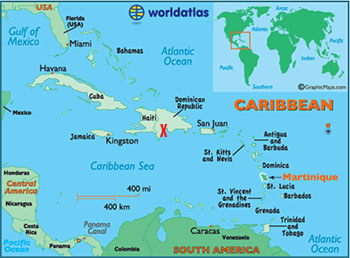 It often occurs that various statistics and country groupings include Haiti with Central America and some others such as with our division of FIFA (Federation of International Football Teams and it translates better in the original French as Fédération Internationale de Football Association). The division that includes Costa Rica is called CONCACAF (Confederation of North, Central America and Caribbean Association Football) and includes Canada, the U.S., Central America and the Caribbean including Haiti.
It often occurs that various statistics and country groupings include Haiti with Central America and some others such as with our division of FIFA (Federation of International Football Teams and it translates better in the original French as Fédération Internationale de Football Association). The division that includes Costa Rica is called CONCACAF (Confederation of North, Central America and Caribbean Association Football) and includes Canada, the U.S., Central America and the Caribbean including Haiti.
There are five other worldwide football divisions of FIFA besides CONCACAF. Took me a while to get around those acronyms, didn`t it? Sorry.
Now that we`ve got futbol out of the way let`s go back in time before Haiti was actually a country. Haitian history can be easily divided into four parts:
-
Pre-Colombian
-
the Spanish Period (1492-1625) Hispaniola
-
the French Period (1625-1789) Saint Dominique
- Revolution and the Modern Period
The Chronicles will focus on the Pre-Colombian and Spanish Periods in this edition of the Chronicles and we`ll pick up the last two time periods next month.
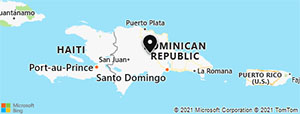 The island, shown on the map right, is currently divided between Haiti in the west end, accounting for about 1/3 of the island, and the Dominican Republic in the east, which accounts for about 2/3 of the island. The northern portion of the border between Haiti and the Dominican Republic is the Massacre River and was named for a massacre in the nineteenth-century of French soldiers by revolting native slaves.
The island, shown on the map right, is currently divided between Haiti in the west end, accounting for about 1/3 of the island, and the Dominican Republic in the east, which accounts for about 2/3 of the island. The northern portion of the border between Haiti and the Dominican Republic is the Massacre River and was named for a massacre in the nineteenth-century of French soldiers by revolting native slaves.
Before those countries were organized this Island was the first place Christopher Columbus landed in the new world and he christened it Hispaniola. We will use this term in this article for convenience, even for the pre-Columbian times.
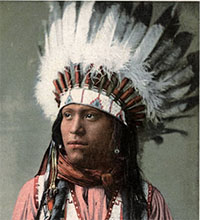 |
| Arawak Chieftain |
The natives occupying the island of Hispaniola, were people called Taíno who were off-shoots of the Arawaks, a tribe that predominated throughout the lower and smaller islands on the southern part of the archipelago (Lesser Antilles). Slowly but surely the Arawaks migrated up the Lesser Antilles chain and eventually up to and into the Greater Antilles.
The Arawak people were known as a peaceful farming tribe who date back to pre-historic times. They lived throughout the Caribbean and in parts of South America around the Andes Mountains, and in Guyana. They grew three main subsistence crops: maize (corn), tobacco, and cassava (also known as yuca). The Arawaks are estimated to have arrived in Hispaniola around the year 1200.
Columbus and his entourage left Palos, Spain on August 3, 1492 with three small ships (Niña, Pinta and Santa Maria). He was searching for a western sea route that would lead to Cathay (China), India, and the gold and spice islands of Asia. His party became the first Europeans to visit the continent of America since the Vikings ventured to Greenland and Newfoundland in the 10th century. His first landing was on October 12, 1492 (hence "Columbus Day") on an island (probably in the Bahamas) and claimed it for Ferdinand and Isabella, his financial backers. Later that month he landed on Hispaniola which he also claimed for Spain and In fact he would claim every place he landed for the crown of Spain (despite existing populations).
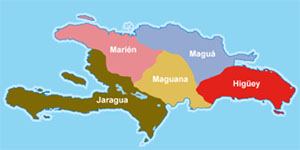 |
| The Five Chiefdoms of Hispaniola - Cerca 1492 |
Hispaniola Island, at the time before Columbus landed, was organized and ruled by a series of five native american Chiefdoms called cacicazgos and ruled in each by a head chief (cacique). Each chiefdom had a number of lesser chiefs (caciques) that were assigned certain territories within the cacicazgo according to physical boundaries (rivers, mountains etc.). The lesser caciques in turn had a number of cacique helpers called nitaínos (somebody`s gotta supervise the maize growing, right?). The cacicazgos eventually evolved into the Departments of Haiti and the Provinces of the Dominican Republic.
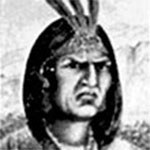 |
| Cacique Guacanagaríx |
So there was a considerable political organization in place and conflicts often arose between caciques of different cacicazgos. In these conflicts the caciques of the El Marión and Magua cacicazgos (northern two regions) often prevailed. The chief of El Marión, Guacanagaríx, was the dude that met Chris Colon when he landed on Hispaniola. If the caricature to the left is accurate it looks like he wasn`t too happy about the meeting nor the invaders. (By the way you get points for being able to pronounce these names - prize list to be announced later)
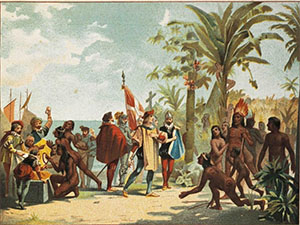 |
| Chris Meeting Cacique Guacanagarix |
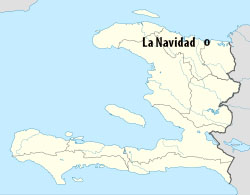 The interesting thing is that Columbus didn`t land and claim Hispaniola until later in the month of October. On the way he observed Cuba which he first thought to be mainland China and when finally landing in Hispanoila, he suspected it to be Japan until he met the natives and their leader Guacanagaríx. Chris established a small colony of 39 people taken from his three vessels at a place he termed La Navidad on the northeast coast of what is now Haiti (map above, left). He then returned to Spain in March of 1493 to great fanfare and awe at the modest amount of gold and spices he brought back with him. The world was, definitely, no longer flat.
The interesting thing is that Columbus didn`t land and claim Hispaniola until later in the month of October. On the way he observed Cuba which he first thought to be mainland China and when finally landing in Hispanoila, he suspected it to be Japan until he met the natives and their leader Guacanagaríx. Chris established a small colony of 39 people taken from his three vessels at a place he termed La Navidad on the northeast coast of what is now Haiti (map above, left). He then returned to Spain in March of 1493 to great fanfare and awe at the modest amount of gold and spices he brought back with him. The world was, definitely, no longer flat.
On his second voyage to the New World, Columbus commanded a much larger fleet of 17 ships including some 1,300 colonists (about 75 feet for a 60 foot long boat) doesn`t sound like a first class booking) to establish a permanent settlement in Hispaniola. The fleet of seventeen ships departed from the bay of Cádiz at dawn of September 25th,1493 heading for the Canary Islands where they had planned to make a stop to replenish water, feed and collect some animals. On November 3rd 1493, the expedition made its first landfall on an island, probably Gran Canaria. Columbus called that Island "Dominica". He stayed only long enough to replenish his water supply). The expedition had two major goals: 1) explore and settle new lands found by Columbus and 2) Christianize the natives (I bet that goal didn`t make Guacanagaríx very happy).
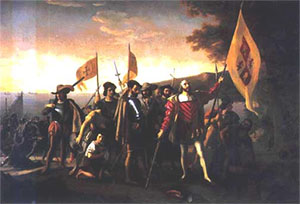 |
| Chris and His Boys Claiming More Territory |
During the course of this voyage Columbus explored Guadeloupe, Antigua, Saint Croix and he also landed on Puerto Rico. When he finally returned to Hispaniola, Columbus discovered that all the Europeans he had left behind during his premier voyage had either died or had been killed. In addition, all things Spanish had been destroyed (so much for the peaceful farmer thing).
Also on this visit Columbus established a new settlement in Hispaniola. He explored the island looking for gold, a modest amount of which he was able to trade for with the natives. He also captured natives, which he turned into slaves. Columbus sent to Spain for additional supplies, which he received. After placing his brother Bartolomew in charge as governor, Chris sailed back to Spain, arriving on June 11, 1496.
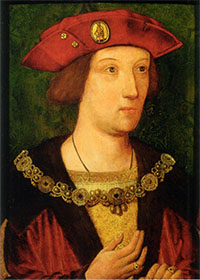 |
| Bartolomew Columbus |
Columbus would make a total of four trips to the new world and on those trips he would span out across the Caribbean, first making contact with the shoreline of Central America in what is now called Mexico and installing Bartolomew as a commander in a settlement farther south along the coast in what is now Panama. Along the way he even landed in a Caribbean village that his first mate termed the "rich coast", or in Spanish, Costa Rica, where he found the natives friendly but the gold sparse (both just like today).
By 1502, after his fourth and last trip, several Spanish settlements had been installed around the ring of the Caribbean that completed the beginning of Spanish influence in the Americas which would last for 300 years until the Central and South Americas and Caribbean lands declared themselves independent of Spanish rule starting in 1821.
His administration of the new colonies and his treatment of the natives was widely criticized in Spanish and European circles. Chroniclers of the voyage reported that the islands may not have been the paradise Columbus reported. A certain Dr. Chanca later wrote a long letter to the municipal council of Seville describing the voyage. In it, he wrote about the "Caribs" (Tainos) who he called "bestial". Chanca wrote that "these people raid the other islands and carry off the women whom they can take, especially the young and handsome. They keep them in service and have them as concubines. They carry off so many that in fifty houses no males were found and of the captives more than twenty were women.
A royal commission was appointed to look into some of the charges leveled against Columbus. After his last trip, Columbus retired to Spain where, after clearing himself of legal problems, he died in relative poverty. For more information on Spanish colonization in the Americas, go HERE.
Of course once the other European powers got wind of the successes of Columbus in his first decade here, and the potential for gold, spices and other treasures, they set out on their own to colonize the new world. That included English, French, Dutch and Portuguese explorers, who were often unfriendly to each other, sometimes quite hostile, plied the Caribbean waters looking for their own riches. So did various pirates, both privateers and some secretly supported by various European royalties.
The French later would make their presence known in Hispaniola, at least in the area now known as Haiti but that story is for next month.
To be continued: Haiti - A History - Part II
¡Solo Bueno!
TOP
¿Que es Eso? Department (¿What is That?)
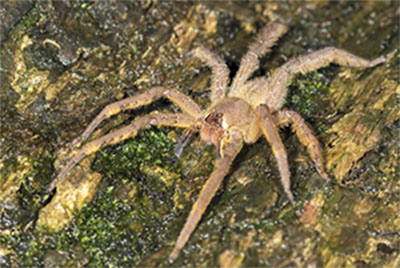
Now that`s one hairy crab.
Maybe it`s a soft-shell like in the Chesapeake Bay? mmmmm.
Answer in
What's-in-a-Word
section below.
¡Pura Vida!
TOP
Health Stuff
| Note: The information given in this section is offered as news information only and does not indicate GGC confirmation or denial of the accuracy of the treatment or a recommendation to pursue it, nor can we or do we guarantee the efficacy of the results nor validity of the conclusions proffered.
(How's that for a disclaimer amigos?) |
Vaccination Status
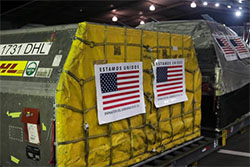 |
| U.S. Vaccine Donation |
The U.S. made a donation of 500,000 doses of the Pfizer vaccine to Costa Rica which arrived by air on July 13.
Said the Embassy here: “The donation of 500,000 COVID-19 doses is in addition to the more than US$4 million worth of field hospitals, ventilators, and other medical supplies already donated by the U.S. government to Costa Rica since the beginning of the pandemic."
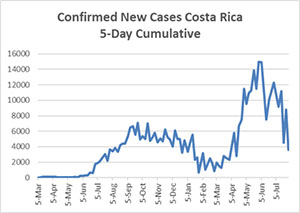 |
| Covid Cases as of 30 July 2021 |
With this donation, the total number of doses used and available in Costa Rica reached 3,347,435. Shortly after receiving the added doses, the health ministry (CAJA) announced that vaccinations of the last priority group, Group 5 , are being done at an increasing rate and that walk-in vaccinations will be available for anyone over 30 years of age or older, with or without risk factors.
In Costa Rica the Health Ministry is reporting fewer hospitalizations. The contagion curve currently is bending downward as shown by the graph to the right.
UPDATE: 20 July - the Health Ministry, through its Costa Rican Institute for Research and Teaching in Nutrition and Health – confirmed Tuesday, July 20, the first 16 cases of the Delta variant of SARS-CoV-2 in Costa Rica. Fever, cough, and headache are the leading symptoms. Seven of the people have recovered, while nine are still in the process of recovering from the virus. None have required hospitalization, nor have they died.
Of the 16 positives for Delta, three patients were vaccinated: two with Pfizer and one with Johnson and Johnson. Those vaccinated with Pfizer were more than 14 days after immunization, while the person vaccinated with Johnson and Johnson was 10 days after their immunization. The report indicated that in three cases the persons had traveled outside the country: Nicaragua, Mexico and the United States. One of the infected is a tourist from Germany.
“At this time, it is key for the prevention and control of covid-19 to continue applying the measures recommended by the World Health Organization (WHO) and the Ministry of Health, which we are all familiar with, but which are essential to contain the transmission of the disease: hand washing, adequate and frequent; the use of a mask, social distancing and the cough and sneeze protocol." said the Ministry of Health.
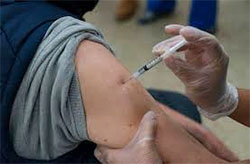 This was not long after the Ministry announced they were planning and expecting for Costa Rica to reach herd immunity by November or December of this year which would lift sanitary restrictions. Much is dependent on completing vaccinations: the current data on July 20 indicated 16% of the population is fully vaccinated (.16 x 5.1 million = 820,000)and 38% has had at least one dose. Now that the U.S. has shipped in 500,000 and it was followed by Pfizer shipping in another 250,000 both of which will help increase the vaccination rate here.
This was not long after the Ministry announced they were planning and expecting for Costa Rica to reach herd immunity by November or December of this year which would lift sanitary restrictions. Much is dependent on completing vaccinations: the current data on July 20 indicated 16% of the population is fully vaccinated (.16 x 5.1 million = 820,000)and 38% has had at least one dose. Now that the U.S. has shipped in 500,000 and it was followed by Pfizer shipping in another 250,000 both of which will help increase the vaccination rate here.
UPDATE: 29 July: In the 10 days following the large donation by the U.S. (500,000 doses) and the added shipment by Pfizer the Health Ministry registered a vaccination rate of over 50,000 per day throughout the country. The fully vaccinated percentage of the population has achieved 45%. Just to help things out a little further, an additional Pfizer shipment of 482,000 doses arrived in Costa Rica, Thursday, July 29. The results are beginning to show in the chart above as the vaccination program has once more turned trend in new cases downward but, like before, we must be cautious not to be too optimistic. The new case trend turned on us once before in the April/May spike also seen in the above graph.
The fight continues to kill this damn thing and progress is being made. Let`s finish the job.
¡Pura Vida!
TOP
Travel Quote of the Month
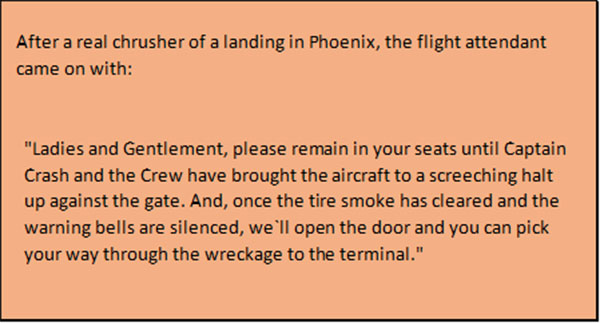
¡A Cachete!
TOP
 GGC Publications Group is the parent organization that publishes the Golden Gringo Chronicles as well as a number of books and paraphernalia related to the Chronicles and Costa Rica. The GGC Bookshelf also includes works from a number of other authors that belong to the Quepos-Manuel Antonio Writers Group in which GGC has been a founding member.
GGC Publications Group is the parent organization that publishes the Golden Gringo Chronicles as well as a number of books and paraphernalia related to the Chronicles and Costa Rica. The GGC Bookshelf also includes works from a number of other authors that belong to the Quepos-Manuel Antonio Writers Group in which GGC has been a founding member.
Here are the books currently on our bookshelf:
All of the above books are available on Amazon.com and the "Read More" links above will lead you to them. You can find more detail on all of them on our GGC Publications Page.
GGC Products Store
GGC Publications also offers some accessories and paraphernalia related to the Chronicles and with Costa Rican themes, to wit:
T-Shirts:

a.
Golden Gringo Chronicles with Logo
b.
Official Golden Gringo with Monkey on Banana Hammock
c.
¡Quepo en Quepos! ("I Fit In Quepos!") with Photo of Quepos
d.
Wanna Monkey Around? - Come on Down! (shown) with Photo of White Faced Monkey, e.
It's OK to be Slothful with photo of Three-Toed Sloth.
The t-shirts are available in several themes, colors, styles and sizes. See them all
HERE.
Coffee Mugs:
a. Golden Gringo, b. Wanna Monkey Around?, c. It's OK to be Slothful
See them all HERE:
What's life without a great cup of Costa Rican coffee? And it tastes even better in a Golden Gringo Chronicles mug!
To see ALL the products available in the Golden Gringo Store go here: GGC Store.
¡Solo Bueno!
What's-in-a-Word
"Tell me and I forget; teach me and I remember; involve me and I learn"
– Benjamin Franklin
Answer to Que Es Eso?
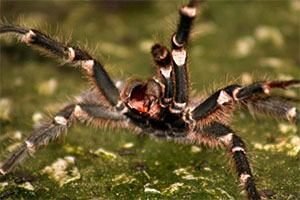 |
| Brazilian Wandering Spider |
That hairy crab is actually a Brazilian Wandering Spider. It`s name comes from being native to the Amazon Jungles where it wanders around during the night looking for food but hides under rocks and logs during the day. It can also be found in parts of Costa Rica, again in the jungle such as on the Osa Peninsula and Corcovado. If approached it assumes an attack position like in the photo and it may attack and bite.
Just because it is small (usually less than two inches in length) doesn`t mean it`s harmless. "Its venom is a neurotoxin, which is intended to paralyze its prey; in humans it can cause difficulty breathing, and although there have been cases reported in Costa Rica that have required medical attention, there has been no need to apply the antidote. There has been however, reports of dogs that have died as a consequence of this spider`s bite."
This is one to avoid amigos, just wander in the opposite direction.
¡Solo Bueno!
TOP
ROMEO Corner
(Retired Old Men Eating Out)
Little India Restaurant, Manuel Antonio
Location: Part of the Hotel Byblos complex, Manuel Antonio, lower level,
Hours: Lunch and Dinner Wednesday thru Monday, Closed Tuesdays
Parking: Considerable in front of the restaurant, more available at hotel if needed.
Contacts: Tel. 4205-0026; Little India Manuel Antonio | Facebook.
Reviewing ROMEOS: Alma L., Bob N., Brian X., Glen C., Harry R., Jorge M., Lori T., Mark W., Olga C., Rebecca X., Roger B., Ruth R.
To Review Our Rating System Go Here: R.O.M.E.O. Rating System
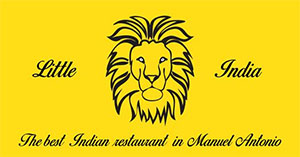 This is the latest version of the pool side restaurant at this popular hotel where there have been several previous restaurants over the years. This time they may have found a real winner.
This is the latest version of the pool side restaurant at this popular hotel where there have been several previous restaurants over the years. This time they may have found a real winner.
At first I chuckled a bit at the tag line on their logo: "The best Indian restaurant in Manuel Antonio" because, as far as I know it`s also the only Indian restaurant in this area. The restaurant is, however, a new venture of a restaurant that goes by the same name and is located in Escazu, in the GAM (Grande Area Metropolitano) or central valley where there are at least 8 Indian restaurants. So the owner, who I met on this trip, a fellow named Avitar, is experienced in Indian cuisine.
The location near the pool provides a certain quietness resulting from being below street level and some 30 meters or so away from busy Manuel Antonio road. Our reservation for 12 had a table already prepared for us. The table decorations and utensils were simple, modern and clean. I quickly noticed one improvement in the physical plant. The new rest rooms (clean and bright) are located a short, easy walk up the entrance ramp (the old ones were down a precarious set of steps, almost under the pool). The group gave Little India a composite score of 4.6 out of 5.0 max for ambiance.
 The menu that was provided (and I had asked earlier if the same menu was available for lunch and dinner, getting an unqualified "yes") was extensive. So extensive that I was overcome with choices; my guess is the menu had over eight small-print pages listed with Indian variations for seafood, meats, vegetables, fruits etc, etc. As a result, I decided to have a full reckoning with my stomach: appetizer, main course and dessert. (photo - Bob`s main course), something I rarely do at these outings.
The menu that was provided (and I had asked earlier if the same menu was available for lunch and dinner, getting an unqualified "yes") was extensive. So extensive that I was overcome with choices; my guess is the menu had over eight small-print pages listed with Indian variations for seafood, meats, vegetables, fruits etc, etc. As a result, I decided to have a full reckoning with my stomach: appetizer, main course and dessert. (photo - Bob`s main course), something I rarely do at these outings.
I love Costa Rica, and the Central Pacific area in particular, but sometimes when we sit down at one of our five dozen or so restaurants I can tell you what`s on the menu before opening it: a page or two listing gringo items such as burgers, pizza and pasta followed by a section of arroz (rice) con something, i.e. seafood (mariscos), beef or pork (res or cerdo), and finishing the list with the (Manuel Antonio) standard postres or desserts such as 1) a brownie with ice cream, 2) key lime (actually limone mandarina) pie or 3. an approximate New York cheesecake. The number of restaurants that offer a broader menu than this for dessert can be counted on one hand. Yes, I understand the formula above works for locals and tourists alike but it can eventually be a little boring to the repetitive restaurant goer here. (There, I got that off my chest - a bit snobby eh what?)
That`s why I was so happy to see such a large and varied menu at Little India - plenty to explore and taste. The menu at Little India is anything but boring. Of course it is strongly suggested that, being familiar with all of the ins and outs of a foreign cuisine you engage a member of the senior restaurant staff to translate or someone familiar with the cuisine to explain the options. We were lucky to have both while we were there.
GG chose an appetizer dish called Paneer Tikkadish and what came was a medium sized platter with light baked cheese squares dusted with a mild red spice, accompanied by roasted vegetables in another tasty spice. The quantity was enough for a lunch by itself so I relegated half of it to "para llevar" (take home).
For the main course I selected a dish from the lamb section named Nilgiri Memana Korma and was presented with lamb chunks that had been marinated in something until tender, then baked in a (mild, green) spicy sauce. It was accompanied with perfectly cooked rice with another light spice. Excellent. Also here, half went to "para llevar".
For dessert I ordered a dish of Gulab Jamun, small balls of light rice pastry saturated in a sweet sauce. Again, excellent. |
 |
.jpg) .6 .6 |
| $$$$.0 |
Value Index= 115 |
Other ROMEOs ordered a variety of foods including a Baked Eggplant Dish, Chicken Kaba Masala, Samosa Chaat (Crunchy samosa served with spicy chickpea curry (chole), yogurt and chutneys!), Tandori Salmon, Coconut Lamb and Butter Chicken. The group composite score for food quality came in at 4.5 out of a possible 5.0 rating.
The highest of the four ratings we use (ambiance, food, service and cost) came in at Little India in the service rating which garnered a composite score of 4.8/5.0. We were served by a lady along with the dining room manager, both of whom were courteous, attentive and helpful. That yields an average for ambiance, food and service of 4.6.
The cost to GG for the three courses and a lemon/seltzer based soft drink came in at $28,840 colones (about $46) including sales tax (13%) and legal gratuity (10%). The composite score for cost came in at 4.0/5.0 resulting in a Value Index of 4.6/4.0 = 115 or in the middle of all the restaurants we`ve evaluated in the last three years in this area. A 4.0 on cost, by the way, is pretty much the overall average of all the upper scale restaurants in Manuel Antonio.
The Romeos can easily put their seal of approval on the new Little India restaurant for an unusual selection and a good meal at a reasonable price. The widely varied menu is a plus.
¡Pura Vida!
TOP
Opt-In Here to Receive Your Free Monthly Copy Of
The Golden Gringo Chronicles
The Golden Gringo Chronicles is a free newsletter that is non-political, non-commercial and, hopefully, informative and entertaining. By signing up you will receive an email each month around the first of the month giving you the links to the latest edition as well as to each individual feature and departmental section.
CLICK HERE TO SIGN-UP FOR THE GOLDEN GRINGO CHRONICLES
or Email me at gg@goldengringo.com, or use our Website at: www.goldengringo.com

Bob Normand, Editor & The Golden Gringo
Pura Vida!
To Contact GGC World Headquarters (yuk, yuk) to makecomments, suggest topics or criticize my bad jokes, just send an email to: gg@goldengringo.com.
Be pithy but kind; I'm sensitive.
Unsubscribe from Golden Gringo Chronicles
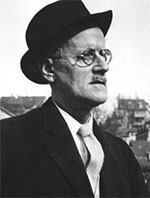






 Those that died
Those that died 
 To go further into space beyond the moon (Mars for example) it will be necessary to devise a much improved rocket engine performance over standard propulsion systems. Ad Astra and Chang-Diez have been working on such a system. Ad Astra recently demonstrated a very high performance for its new VASIMR VX-200SS propulsion system, an "electric-electric" engine that operated at 82.5 kw for 28 hours. Evidently a 50 kw performance is considered "high powered" and there had been nothing available in the NASA shop to date prior to VASIMR that generated over 5 kw.
To go further into space beyond the moon (Mars for example) it will be necessary to devise a much improved rocket engine performance over standard propulsion systems. Ad Astra and Chang-Diez have been working on such a system. Ad Astra recently demonstrated a very high performance for its new VASIMR VX-200SS propulsion system, an "electric-electric" engine that operated at 82.5 kw for 28 hours. Evidently a 50 kw performance is considered "high powered" and there had been nothing available in the NASA shop to date prior to VASIMR that generated over 5 kw. Last month
Last month
 One of the things that often perplexes expats when they take up residency here is the seeming complexity in handling money (and I don`t mean conversion rate). One of the best pieces of advice I got when I was new here was to leave my US account open but have another here for local transactions. I ended up with a U.S. account in a major bank stateside with a debit/credit card and a checking account at a national bank here (I very rarely write a check from either source, preferring to use the bank`s Billpay service in both places).
One of the things that often perplexes expats when they take up residency here is the seeming complexity in handling money (and I don`t mean conversion rate). One of the best pieces of advice I got when I was new here was to leave my US account open but have another here for local transactions. I ended up with a U.S. account in a major bank stateside with a debit/credit card and a checking account at a national bank here (I very rarely write a check from either source, preferring to use the bank`s Billpay service in both places).






 In Guatemala last month the emphasis was on President Alejandro Giammattei`s denial of receiving of old bribes in the form of money from Russian intermediaries. His denial came four days after the dismissal of the anti-corruption prosecutor Juan Francisco Sandoval who said that he had information of about reported deliveries of money to the government by Russian citizens last April, without elaborating on the matter.
In Guatemala last month the emphasis was on President Alejandro Giammattei`s denial of receiving of old bribes in the form of money from Russian intermediaries. His denial came four days after the dismissal of the anti-corruption prosecutor Juan Francisco Sandoval who said that he had information of about reported deliveries of money to the government by Russian citizens last April, without elaborating on the matter.  Haitian President Jovenel Moise was assassinated in the middle of the night of Wednesday, July 7 in his home. About 30 people have been arrested which include over 20 Colombian mercenaries who did the shooting and several political rivals to Moise. Among the so-called rivals was Dr. Christian Emmanuel Sanon, 63, "a Haitian national doctor who lives in Florida. He arrived in the country via private jet last month with a group of Colombian nationals with the initial goal of `arresting the president` according to Haitian national police director Leon Charles.
Haitian President Jovenel Moise was assassinated in the middle of the night of Wednesday, July 7 in his home. About 30 people have been arrested which include over 20 Colombian mercenaries who did the shooting and several political rivals to Moise. Among the so-called rivals was Dr. Christian Emmanuel Sanon, 63, "a Haitian national doctor who lives in Florida. He arrived in the country via private jet last month with a group of Colombian nationals with the initial goal of `arresting the president` according to Haitian national police director Leon Charles.
 Last month
Last month
 For background information Allen moved to Costa Rica in 2006. He had married a Costa Rican, which is one way to get rapid residency and citizenship (but don`t fake it because that breaks the law and can result in jail time). To prove he was not faking, he and his wife raised four children, and he is now also the grandfather of four. He holds a Masters degree in large group psychology, which helps him try to understand and write about the Latin culture, but he refrains from blowing his own horn. He lives with his family in Cuidad Colon (translate that to Columbus City), a town in the Central Valley not far from San José.
For background information Allen moved to Costa Rica in 2006. He had married a Costa Rican, which is one way to get rapid residency and citizenship (but don`t fake it because that breaks the law and can result in jail time). To prove he was not faking, he and his wife raised four children, and he is now also the grandfather of four. He holds a Masters degree in large group psychology, which helps him try to understand and write about the Latin culture, but he refrains from blowing his own horn. He lives with his family in Cuidad Colon (translate that to Columbus City), a town in the Central Valley not far from San José.
 Basically, there are three types of horn blowing that will be encountered.
Basically, there are three types of horn blowing that will be encountered.  Type 2-A - In cases where the double klaxon sound is coming from a taxi, it could be that the driver is signaling a pedestrian saying, “Estoy libre! (I’m free!) Do you need a ride?” Or, if it is a pretty female pedestrian, it could be the driver (taxi or otherwise) is communicating that they find the woman attractive and are offering her a possible ride, a relationship, and to father her children. Or, it may mean, “Hey, I know you. Do you need a ride? If so, I’ll stop right here in traffic so you can get in.” This can result in a Type 3 honk (discussed later) from other drivers.
Type 2-A - In cases where the double klaxon sound is coming from a taxi, it could be that the driver is signaling a pedestrian saying, “Estoy libre! (I’m free!) Do you need a ride?” Or, if it is a pretty female pedestrian, it could be the driver (taxi or otherwise) is communicating that they find the woman attractive and are offering her a possible ride, a relationship, and to father her children. Or, it may mean, “Hey, I know you. Do you need a ride? If so, I’ll stop right here in traffic so you can get in.” This can result in a Type 3 honk (discussed later) from other drivers.  One might wonder, as I have, how Ticos can generate virtually instantaneous horn blowing actions (see “nanoseconds” in Type 1, above). The secret is that many drive with both hands on the wheel and with a finger or thumb perpetually poised over the horn button, ready to signal to others around them at a moment’s notice.
One might wonder, as I have, how Ticos can generate virtually instantaneous horn blowing actions (see “nanoseconds” in Type 1, above). The secret is that many drive with both hands on the wheel and with a finger or thumb perpetually poised over the horn button, ready to signal to others around them at a moment’s notice. 
 What can you say about the rainy season in Costa Rica?. That it rains a lot amigos, that`s what you can say. The heavy ones are described by the meteorologists as the "convergence of the tropical zones" in which rain squalls and storms come from the Caribbean Sea and move rather much along the equator from east to west. In July we had our share of these storms and, at my last count (July 26), we had experienced our 18th "tropical wave" of the season, at least one of which caused serious flooding in Quepos.
What can you say about the rainy season in Costa Rica?. That it rains a lot amigos, that`s what you can say. The heavy ones are described by the meteorologists as the "convergence of the tropical zones" in which rain squalls and storms come from the Caribbean Sea and move rather much along the equator from east to west. In July we had our share of these storms and, at my last count (July 26), we had experienced our 18th "tropical wave" of the season, at least one of which caused serious flooding in Quepos.  And the northern part of the country hasn`t fared much better with flooding and landslides either. This was true particularly in the northeast in the provinces of Limon and Cartago where the bridge over the river Estrella (photo) had the entrance ramp destroyed (someone should tell those people it`s not safe to congregate on the bridge side of that gap). CNE (Center for National Emergencies) announced that by July 26 the number of activated emergency shelters had increased from 29 to 52 and approximately 3,000 people were being sheltered after having left their homes in flooded areas.
And the northern part of the country hasn`t fared much better with flooding and landslides either. This was true particularly in the northeast in the provinces of Limon and Cartago where the bridge over the river Estrella (photo) had the entrance ramp destroyed (someone should tell those people it`s not safe to congregate on the bridge side of that gap). CNE (Center for National Emergencies) announced that by July 26 the number of activated emergency shelters had increased from 29 to 52 and approximately 3,000 people were being sheltered after having left their homes in flooded areas. 
 The island, shown on the map right, is currently divided between Haiti in the west end, accounting for about 1/3 of the island, and the Dominican Republic in the east, which accounts for about 2/3 of the island. The northern portion of the border between Haiti and the Dominican Republic is the Massacre River and was named for a massacre in the nineteenth-century of French soldiers by revolting native slaves.
The island, shown on the map right, is currently divided between Haiti in the west end, accounting for about 1/3 of the island, and the Dominican Republic in the east, which accounts for about 2/3 of the island. The northern portion of the border between Haiti and the Dominican Republic is the Massacre River and was named for a massacre in the nineteenth-century of French soldiers by revolting native slaves. 



 The interesting thing is that Columbus didn`t land and claim Hispaniola until later in the month of October. On the way he observed Cuba which he first thought to be mainland China and when finally landing in Hispanoila, he suspected it to be Japan until he met the natives and their leader Guacanagaríx. Chris established a small colony of 39 people taken from his three vessels at a place he termed La Navidad on the northeast coast of what is now Haiti (map above, left). He then returned to Spain in March of 1493 to great fanfare and awe at the modest amount of gold and spices he brought back with him. The world was, definitely, no longer flat.
The interesting thing is that Columbus didn`t land and claim Hispaniola until later in the month of October. On the way he observed Cuba which he first thought to be mainland China and when finally landing in Hispanoila, he suspected it to be Japan until he met the natives and their leader Guacanagaríx. Chris established a small colony of 39 people taken from his three vessels at a place he termed La Navidad on the northeast coast of what is now Haiti (map above, left). He then returned to Spain in March of 1493 to great fanfare and awe at the modest amount of gold and spices he brought back with him. The world was, definitely, no longer flat.




 This was not long after the Ministry announced they were planning and expecting for Costa Rica to reach herd immunity by November or December of this year which would lift sanitary restrictions. Much is dependent on completing vaccinations: the current data on July 20 indicated 16% of the population is fully vaccinated (.16 x 5.1 million = 820,000)and 38% has had at least one dose. Now that the U.S. has shipped in 500,000 and it was followed by Pfizer shipping in another 250,000 both of which will help increase the vaccination rate here.
This was not long after the Ministry announced they were planning and expecting for Costa Rica to reach herd immunity by November or December of this year which would lift sanitary restrictions. Much is dependent on completing vaccinations: the current data on July 20 indicated 16% of the population is fully vaccinated (.16 x 5.1 million = 820,000)and 38% has had at least one dose. Now that the U.S. has shipped in 500,000 and it was followed by Pfizer shipping in another 250,000 both of which will help increase the vaccination rate here.



















 This is the latest version of the pool side restaurant at this popular hotel where there have been several previous restaurants over the years. This time they may have found a real winner.
This is the latest version of the pool side restaurant at this popular hotel where there have been several previous restaurants over the years. This time they may have found a real winner. The menu that was provided (and I had asked earlier if the same menu was available for lunch and dinner, getting an unqualified "yes") was extensive. So extensive that I was overcome with choices; my guess is the menu had over eight small-print pages listed with Indian variations for seafood, meats, vegetables, fruits etc, etc. As a result, I decided to have a full reckoning with my stomach: appetizer, main course and dessert. (photo - Bob`s main course), something I rarely do at these outings.
The menu that was provided (and I had asked earlier if the same menu was available for lunch and dinner, getting an unqualified "yes") was extensive. So extensive that I was overcome with choices; my guess is the menu had over eight small-print pages listed with Indian variations for seafood, meats, vegetables, fruits etc, etc. As a result, I decided to have a full reckoning with my stomach: appetizer, main course and dessert. (photo - Bob`s main course), something I rarely do at these outings.
